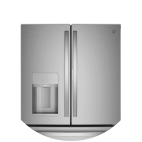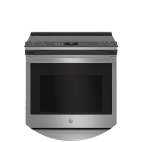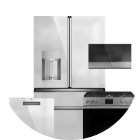One of the most important design aspects in your kitchen is the lighting. Insufficient lighting can make a kitchen feel dark and dingy while glaring overhead lighting can make it too harsh. However, the perfect mix of lighting can add dimension and depth to your space that creates comfort, functionality, and beauty. The goal with your kitchen’s lighting is to illuminate your space while reducing glare and shadows. The best way to achieve this goal is with multiple sources of lighting layered on top of each other to create a maximum effect: ambient lighting, task lighting, and accent lighting. Ambient lighting paired with task lighting provides shadow-free workspaces while accent lighting creates drama and beauty. The simple steps below will help you layer on lighting with ease to give your kitchen a richer environment. 1. Start With Ambient Lighting Ambient lighting is the foundational source that provides each room with the basic light to allow you to move about. The goal with ambient lighting is to provide a comfortable level of brightness without the glare. While this type of light is most commonly found in homes as an overhead fixture that protrudes from the ceiling in the center of the kitchen, many homeowners are finding them to cause a harsh glare and are opting for fixtures closer to the ceiling to allow the light to be diffused or multiple recessed lights inset into the ceiling and thoughtfully placed above main workstations.
1. Start With Ambient Lighting Ambient lighting is the foundational source that provides each room with the basic light to allow you to move about. The goal with ambient lighting is to provide a comfortable level of brightness without the glare. While this type of light is most commonly found in homes as an overhead fixture that protrudes from the ceiling in the center of the kitchen, many homeowners are finding them to cause a harsh glare and are opting for fixtures closer to the ceiling to allow the light to be diffused or multiple recessed lights inset into the ceiling and thoughtfully placed above main workstations. 2. Layer In Task Lighting Even with multiple sources, overhead ambient lighting can still cause shadows while you stand at the counter making it difficult to see the task at hand. Layering in task lighting reduces these shadows by creating another level of light. Task lighting should be placed above the actual work area, most importantly the sink, the oven, and countertops. It is most commonly found as undercabinet lighting but can also include pendant lighting and vent hood lighting. Since task lighting is usually placed much lower than the ceiling, it should be recessed in order to reduce a distracting glare. Undercabinet lighting can be inset to the upper cabinets while pendant lighting can be diffused with a cover.
2. Layer In Task Lighting Even with multiple sources, overhead ambient lighting can still cause shadows while you stand at the counter making it difficult to see the task at hand. Layering in task lighting reduces these shadows by creating another level of light. Task lighting should be placed above the actual work area, most importantly the sink, the oven, and countertops. It is most commonly found as undercabinet lighting but can also include pendant lighting and vent hood lighting. Since task lighting is usually placed much lower than the ceiling, it should be recessed in order to reduce a distracting glare. Undercabinet lighting can be inset to the upper cabinets while pendant lighting can be diffused with a cover.  3. Add Accent Lighting The final layer of lighting highlights and enhances specific details of your space to give them a museum-like quality. Put your favorite appliance on display, such as that robust professional range or glass canopy range hood, with directional lighting from ceiling recessed lights. Make your beautiful quartz countertops sparkle or turn your Le Creuset utensil holder into a work of art with undercabinet accent lighting. Accent lighting should be completely hidden from view so that your eye focuses only on the feature brought to light by this light.
3. Add Accent Lighting The final layer of lighting highlights and enhances specific details of your space to give them a museum-like quality. Put your favorite appliance on display, such as that robust professional range or glass canopy range hood, with directional lighting from ceiling recessed lights. Make your beautiful quartz countertops sparkle or turn your Le Creuset utensil holder into a work of art with undercabinet accent lighting. Accent lighting should be completely hidden from view so that your eye focuses only on the feature brought to light by this light.  Need help with lighting in your kitchen? Schedule an appointment with our kitchen design expert to discover how your kitchen can be brought to life with proper illumination!
Need help with lighting in your kitchen? Schedule an appointment with our kitchen design expert to discover how your kitchen can be brought to life with proper illumination!
 1. Start With Ambient Lighting Ambient lighting is the foundational source that provides each room with the basic light to allow you to move about. The goal with ambient lighting is to provide a comfortable level of brightness without the glare. While this type of light is most commonly found in homes as an overhead fixture that protrudes from the ceiling in the center of the kitchen, many homeowners are finding them to cause a harsh glare and are opting for fixtures closer to the ceiling to allow the light to be diffused or multiple recessed lights inset into the ceiling and thoughtfully placed above main workstations.
1. Start With Ambient Lighting Ambient lighting is the foundational source that provides each room with the basic light to allow you to move about. The goal with ambient lighting is to provide a comfortable level of brightness without the glare. While this type of light is most commonly found in homes as an overhead fixture that protrudes from the ceiling in the center of the kitchen, many homeowners are finding them to cause a harsh glare and are opting for fixtures closer to the ceiling to allow the light to be diffused or multiple recessed lights inset into the ceiling and thoughtfully placed above main workstations. 2. Layer In Task Lighting Even with multiple sources, overhead ambient lighting can still cause shadows while you stand at the counter making it difficult to see the task at hand. Layering in task lighting reduces these shadows by creating another level of light. Task lighting should be placed above the actual work area, most importantly the sink, the oven, and countertops. It is most commonly found as undercabinet lighting but can also include pendant lighting and vent hood lighting. Since task lighting is usually placed much lower than the ceiling, it should be recessed in order to reduce a distracting glare. Undercabinet lighting can be inset to the upper cabinets while pendant lighting can be diffused with a cover.
2. Layer In Task Lighting Even with multiple sources, overhead ambient lighting can still cause shadows while you stand at the counter making it difficult to see the task at hand. Layering in task lighting reduces these shadows by creating another level of light. Task lighting should be placed above the actual work area, most importantly the sink, the oven, and countertops. It is most commonly found as undercabinet lighting but can also include pendant lighting and vent hood lighting. Since task lighting is usually placed much lower than the ceiling, it should be recessed in order to reduce a distracting glare. Undercabinet lighting can be inset to the upper cabinets while pendant lighting can be diffused with a cover.  3. Add Accent Lighting The final layer of lighting highlights and enhances specific details of your space to give them a museum-like quality. Put your favorite appliance on display, such as that robust professional range or glass canopy range hood, with directional lighting from ceiling recessed lights. Make your beautiful quartz countertops sparkle or turn your Le Creuset utensil holder into a work of art with undercabinet accent lighting. Accent lighting should be completely hidden from view so that your eye focuses only on the feature brought to light by this light.
3. Add Accent Lighting The final layer of lighting highlights and enhances specific details of your space to give them a museum-like quality. Put your favorite appliance on display, such as that robust professional range or glass canopy range hood, with directional lighting from ceiling recessed lights. Make your beautiful quartz countertops sparkle or turn your Le Creuset utensil holder into a work of art with undercabinet accent lighting. Accent lighting should be completely hidden from view so that your eye focuses only on the feature brought to light by this light.  Need help with lighting in your kitchen? Schedule an appointment with our kitchen design expert to discover how your kitchen can be brought to life with proper illumination!
Need help with lighting in your kitchen? Schedule an appointment with our kitchen design expert to discover how your kitchen can be brought to life with proper illumination! 









